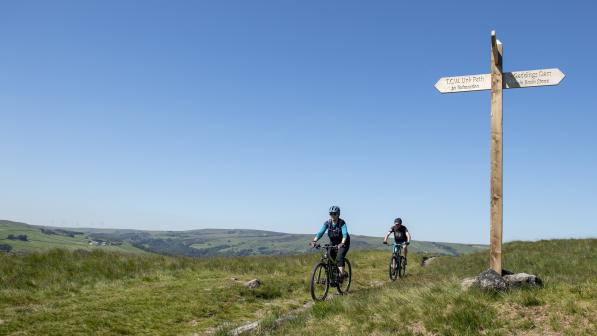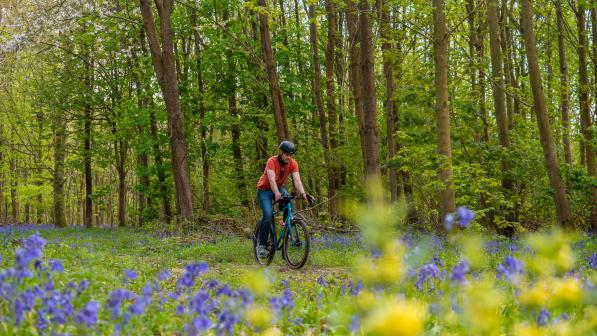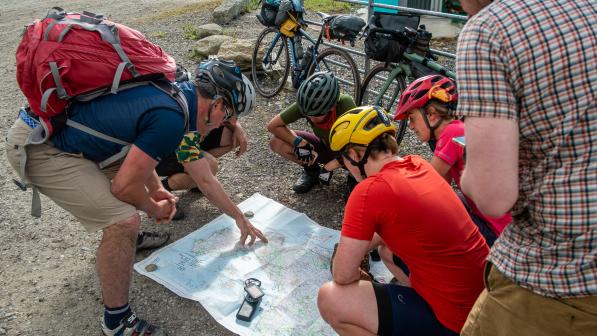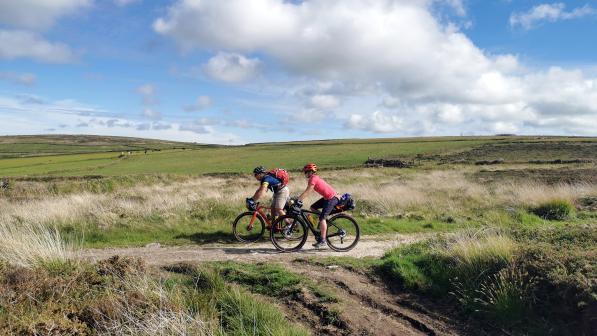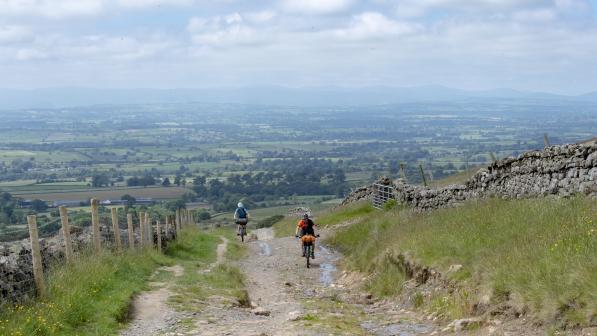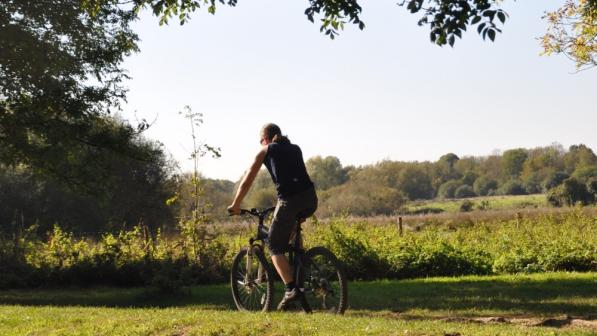Save your trails before they are lost for good
Update August 2025: The cut-off date for adding historic rights of way to the map is set to be repealed, after previously being pushed back from 2026 to 2031.
Whether you use them for riding, running or walking the dog, our public paths are a gateway to adventure – a way to take time out, connect with nature and explore new places. They bring to life our history and heritage. Your path could be an old Roman road or a way used by pilgrims to travel to church.
However, many of these routes that have been used for centuries aren’t officially recorded on the map, meaning over 49,000 miles of paths could be lost forever.
Identifying and recording these lost ways is a huge task, but by combining efforts with individuals and groups all over the country, you can help make sure they are put on the map.
Crucial links
The Countryside and Rights of Way Act 2000 (CRoW Act) brought in several improvements to public access, like allowing open access on foot on some areas of land and promoting strategic planning of rights of way networks.
It also introduced a cut-off date of January 2026 for any rights of way created before 1949 to be added to the definitive map (the legal record of public rights of way), so the public right to use them would be officially recognised.
Thanks to the efforts of rights of way campaigners, regulations were passed in 2023 which changed that deadline to January 2031. Even with the later deadline, this would have meant that if these historic paths are not recorded, the legal right to use them would be extinguished in 2031.
In December 2024, Defra announced that it will repeal the deadline altogether.
Find out more about how we got to this point.
Why does it matter?
Many historic paths may be in frequent use by the public already, but as they are not recorded as rights of way, the landowner is able to close them off at any time. Others might be forgotten and overgrown, but could potentially be a useful route.
This is particularly significant for off-road cycling and horse riding due to the fragmented nature of the bridleway and byway network. There are many places where adding historic rights of way to the map could form a crucial link between existing rights of way.
There are other cases where rights of way were incorrectly recorded as footpaths but actually carry higher rights, for example where they were previously used as a road for horses and carriages. Making sure these are recorded correctly could open up more rights of way for cycling.
Adding rights of way to the map
Proving that a right of way exists involves gathering evidence from historic maps. Any route shown on old maps as a public road or bridle path that doesn’t appear on current Ordnance Survey maps could be a contender.
Ever spotted one of those odd bridleways that suddenly turn into a footpath at a parish boundary? Chances are the footpath was incorrectly recorded when the council first produced their definitive map, and actually carries higher rights.
The more evidence you can find to support your claim, the greater the chance of success. Once you’ve gathered all your evidence, you can put in an application to the local authority for a Definitive Map Modification Order (DMMO).
Then sit back and pat yourself on the back, but don’t hold your breath – councils have a large backlog of applications and some take years to go through.
Help and resources
Researching historic rights of way may seem like a bit of an undertaking, but the British Horse Society and Ramblers have produced some great information and online tools to help steer you through and make life easier.
Rather than reinventing the wheel, we’ve gathered all the resources here in one place so they are easy to find.
Protecting these routes will help people to get out and about - on a horse or bike, driving a carriage or walking - and experience the natural environment.
Will Steel, 2026 project manager at British Horse Society.
Changing the status of rights of way
Cycling UK briefings are a good place to start for an overview of the processes for recording and upgrading rights of way:
- Changing the status of rights of way (England and Wales)
- Developing new paths for cycling in the countryside
Archive maps
The National Library of Scotland has a fantastic online tool to view a wide range of historical maps of Britain and compare them side-by-side.
British Horse Society – Project 2026
- BHS’s Project 2026 is designed to help groups and individuals start researching and recording lost rights of way, and is as relevant for cyclists as it is for horse riders.
- Their Project 2026 toolkit is an excellent place to start for a step-by-step guide to researching historic routes.
- Once you’re ready to dive in, there is also a more detailed guide with everything you could wish to know about doing the research and making the application.
- To share information and avoid duplicating efforts, BHS has created a mapping tool to help gather evidence and mark routes that an application has been made for.
- Financial support is available to recover any costs incurred in researching and making an application, and there are also training sessions for a systematic approach to researching historic rights of way. Both of these are available for anyone researching lost routes, not just BHS members.
The man behind all of this is Will Steel, BHS’ 2026 project manager. He told us why it is so essential that these routes are protected:
“Project 2026 is so important as it could be our last chance to safeguard thousands of rights of way that will otherwise be lost at the cut-off date of 1 January 2026.
“Protecting these routes will help people to get out and about - on a horse or bike, driving a carriage or walking - and experience the natural environment avoiding the ever-busier road network.
“The missing routes can often be key links in the minor highway network that also provide an opportunity to meet wider objectives around active and sustainable travel. I would really encourage anyone interested to get involved before it is too late.”

Ramblers – Don’t Lose Your Way campaign
- During spring and summer 2020, thousands of volunteers used an online tool created by Ramblers to compare old and new maps, and uncovered over 49,000 miles of lost ways. See where the lost paths are in your area, and start researching them.
- There is also a comprehensive list of the many types of map sources you can investigate.
- To find out more about the background, have a look at this useful timeline.
Jack Cornish, Don’t Lose Your Way programme manager, explained his passion for lost rights of way and why you should get involved:
“Our paths are one of our most precious assets. They connect us to our landscapes, and to our history and the people who formed them over the centuries.
“If we lose our paths, a little bit of our past goes with them. This is our only opportunity to save thousands of miles of rights of way and time is running out.
“Joining our group of citizen geographers is a really easy way to help and by doing so, you’ll become part of the movement that puts these paths back on the map for generations to come.”

Restoring the Record
The book ‘Rights of Way: Restoring the Record’ by Sarah Bucks and Phil Wadey is the authoritative source of information on recording lost ways, and provides the basis for the BHS training sessions.
What is Cycling UK doing?
We recognise that BHS and Ramblers have done a fantastic job producing resources and mapping tools to help people put lost ways back on the map, so we don’t want to duplicate their efforts.
However, Cycling UK has been busy researching behind the scenes – most recently involving an application for 24 routes in the New Forest, based on historic records from Parliamentary archives. If successful, this will add around 60 miles of lost bridleways and restricted byways to the definitive map.

The more people that get stuck in, the more routes we can add to the map before they are lost.
Get involved
The phrase ‘citizen geographers’ used by Ramblers’ Jack Cornish is apt, as Cycling UK members have a long history of contributing to maps. During the first two decades of the twentieth century, Cyclists’ Touring Club (now Cycling UK) members collaborated with Bartholemew maps to provide reliable topographic information about the routes they rode, which Bartholemew would use to update their maps.
Now it’s your turn to help make sure our maps reflect reality.
Our rights of way network is one of our most precious assets. If you want the routes you ride or walk to be protected for future generations, now is your chance to make sure they are on the map. Get your detective hat on and let’s see what we discover.
